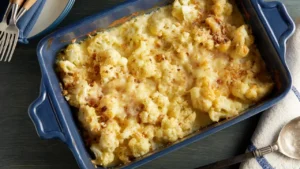Craving a taste of authentic Italian bread? Look no further than homemade ciabatta. This airy, crusty bread with its distinctive open texture is a delight for bread lovers. While it may seem intimidating to make, with a little patience and the right technique, you can create a masterpiece in your own kitchen. In this guide, we’ll walk you through the process of making ciabatta bread from start to finish. From preparing the dough to shaping and baking, we’ll provide clear instructions and tips to ensure your success. So, let’s get started on your homemade ciabatta journey!

WHAT IS CIABATTA BREAD?
Ciabatta bread is a rustic white loaf that’s a staple in Italian bakeries. With its thin, crisp crust and incredibly soft interior, it’s perfect for dipping in sauces or crafting delicious panini.
This bread is light and easy to digest, thanks to its high water content and long leavening time. As a result, it features the characteristic airy bubbles throughout.
Ciabatta is versatile and can be enjoyed in various ways. You can slice it in half for sandwiches or serve it drizzled with olive oil and balsamic vinegar. It’s also ideal for “scarpetta,” a technique used to scoop up hearty dishes like peperonata, caponata, or polpette with tomato sauce. For a delightful breakfast treat, try it sliced, buttered, and topped with jam.
HOW TO PRONOUNCE CIABATTA
In Italian, “Ciabatta” is pronounced as “Chah-bah-ttah.” It is a feminine noun, with the plural form being “Ciabatte” (pronounced “Chah-bah-tteh”). The word “ciabatta” translates to “slipper” in English, a name inspired by its unique long and flat shape, which is reminiscent of this type of footwear. As a result, it is often referred to as “Italian Slipper Bread” in English-speaking countries.
HOW TO MAKE CIABATTA BREAD (STEP BY STEP)
INGREDIENTS
For the starter:
- 1 cup lukewarm water
- 2 cups bread flour (260 grams, sifted)
- 1 teaspoon dry yeast
For the dough:
- 2 cups lukewarm water
- 5-6 cups bread flour (650-750 grams, sifted)
- 1 ½ teaspoons salt
For greasing:
- 1 tablespoon extra virgin olive oil
INSTRUCTIONS
- Prepare the Starter:
- In a medium bowl, combine the lukewarm water and dry yeast. Let it sit for 10 minutes until the yeast dissolves and becomes creamy.
- Mix in the flour until you achieve a very loose and sticky dough, similar in consistency to sour cream or Greek yogurt. It should be too wet to knead by hand.
- Cover the bowl with plastic wrap and let it rest at room temperature for 3-4 hours or overnight (no more than 24 hours to prevent over-maturing).
- Mix the Dough:
- After resting, the starter should be bubbly and looser.
- Gradually pour the lukewarm water around the edges of the starter to hydrate and aerate it.
- Transfer the starter and water mixture to the bowl of a stand mixer, and oil the dough hook. Mix on low speed for 1-2 minutes while gradually adding flour.
- In the final portion of flour (approximately 1 cup), add the salt and mix it in. Knead on medium speed for 10 minutes until the dough becomes smooth and climbs up the hook. Increase the speed to high and knead for another 10 minutes. The dough should be silky, shiny, and pull away from the bowl sides.
- First Rise:
- Transfer the dough to a large, oiled bowl to allow for expansion. Cover with plastic wrap and let it rise at room temperature for about 40-50 minutes until doubled in size.
- Folding Process:
- After the first rise, dip a silicone spatula in water and gently fold the dough onto itself from the outside to the center (6-10 folds).
- Turn the bowl 90 degrees and repeat the folding process. Cover with plastic wrap and let it rise for another 40-50 minutes.
- Repeat the folding process one more time, then let the dough rest for an additional 40-50 minutes.
- Shaping the Bread:
- Once the dough is bubbly and ready, generously sprinkle flour on your work surface. Flip the bowl upside down to let the dough slide out.
- Sprinkle flour on top of the dough and use scrapers to shape it into a rectangle. Cut the dough into elongated loaves or individual rolls, ideal for panini.
- Transfer the loaves to a generously floured linen cloth, separating them with folds of the towel or using individual towels.
- Final Rise and Baking:
- Preheat the oven to 450°F (232°C) while the ciabatta rests on the towel.
- After 10-15 minutes, flip the loaves onto parchment paper sprinkled with semolina or corn flour to prevent sticking.
- Just before baking, spray the loaves with cold water to create steam, which helps achieve a perfect crust.
- Bake the ciabatta for 20-25 minutes without opening the oven. After 10 minutes, reduce the temperature to 400°F (204°C). The bread is done when golden brown or slightly darkened.
- Cooling:
- Let the baked ciabatta cool for 15-20 minutes on a wire rack before slicing.
Enjoy your delicious homemade ciabatta bread!


